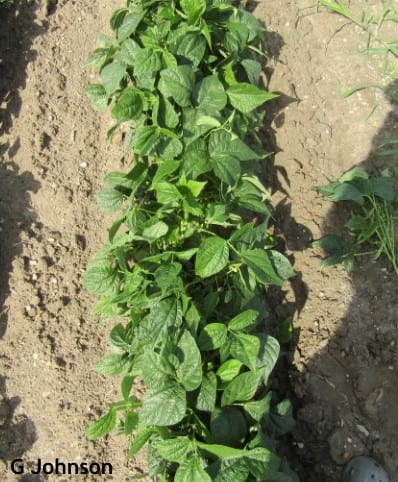Gordon Johnson, Extension Vegetable & Fruit Specialist; gcjohn@udel.edu
Snap beans are very susceptible to quality reductions and yield losses when under stress during flowering and early pod development. This is a common problem in hot weather where pollination is affected leading to split sets. We are currently evaluating varieties of snap beans for heat tolerance at the University of Delaware’s research farm at Georgetown with early May and mid-June plantings.
May snap bean plantings commonly avoid hot weather and produce high yields with good quality. However, in 2017, cold, wet weather after planting and high incidence of root rot in our trials has resulted in reduced plant vigor, shorter plants, reduced yield, and poor pod quality.
Early season stress is not uncommon and typically we recommend the use of seed already treated with an approved seed treatment with a fungicide for Rhizoctonia and Fusarium control such as Maxim 4FS, a second fungicide for Pythium control such as Apron XL LS and an improved insecticide for seed corn maggot control. It is also recommended that April and early May snap bean plantings go into in lighter soils with good drainage.

‘Caprice’ snap beans, an industry standard. Note the small plant size in early-May planted beans

Yellow stunted snap bean variety due to Fusarium root rot and cold stress in May.

Poor pod quality in harvested snap beans due to stressful May conditions.
